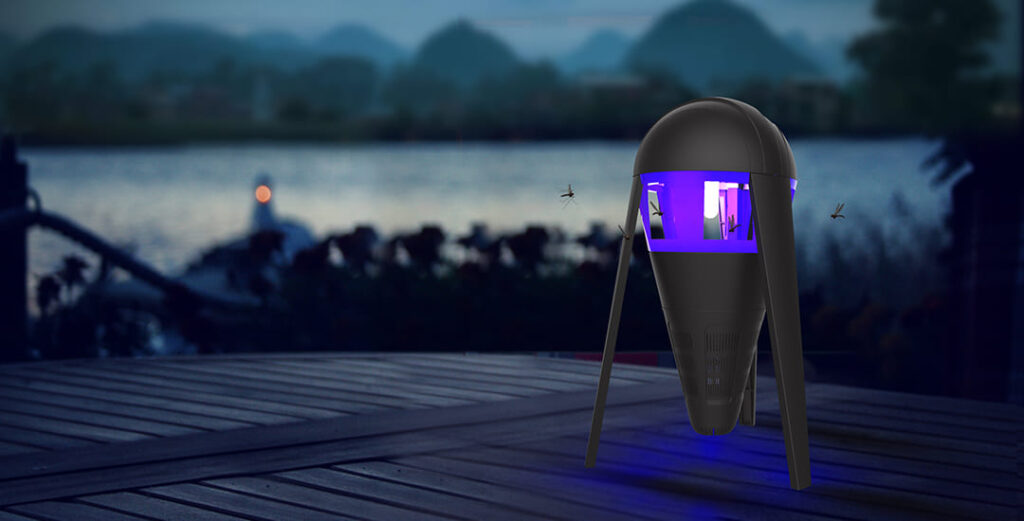Why Not All Fly Traps Are Created Equal Despite Identical Lamp Wattage?

In the realm of fly control, Electronic Fly Traps (EFTs) are essential tools in commercial and industrial environments. These devices utilize ultraviolet (UV) lamps to attract and eliminate flying insects, contributing to a cleaner and more hygienic space. Despite the focus on lamp wattage as a key factor in fly trap performance, not all fly traps are created equal even when equipped with identical lamp wattage. In this blog, we delve into the nuances that set different fly traps apart and why wattage alone does not guarantee the same level of effectiveness.
Plug-In Insect Killer Vs Solar-Powered Bug Zapper: Which is Better?

When it comes to keeping pesky insects at bay, bug zappers offer a convenient solution. However, with various options available in the market, it’s essential to choose the right type for your needs. In this blog, we’ll delve into the debate of plug-in versus solar-powered bug zappers to help you make an informed decision.
Mosquito Mesh vs. Electric Mosquito Killer: Which Offers Better Protection?

In the eternal battle against mosquitoes, finding the right defense mechanism is crucial. Two popular options stand out: mosquito mesh and electric mosquito killers. But which one truly provides superior protection against these blood-sucking pests? Let’s delve into the details and compare the effectiveness, convenience, and overall performance of both options to help you make an informed decision.
AC Powered vs. DC Powered Insect Trap

When it comes to choosing an insect trap for your space, the power source plays a crucial role in determining its efficiency and effectiveness. AC (alternating current) and DC (direct current) powered insect traps each have their own set of advantages and considerations to keep in mind. Let’s delve into the differences between AC and DC powered insect traps to help you make an informed decision.
All About Electric Fly Zappers

In the realm of pest control, electric fly zappers stand out as a powerful weapon against airborne nuisances. These innovative devices, also known as bug zappers, attract, trap, and eliminate flying insects using electricity. As they buzz and zap their way through your space, it’s essential to understand their ins and outs to make the most of their pest-banishing potential. Let’s delve into everything you need to know about electric fly zappers, from how they work to tips for maximizing their efficiency.
What to Consider When Installing Multiple Bug Zappers?

Installing multiple bug zappers can be a strategic and effective way to combat flying insects and enhance living spaces. However, proper planning and placement are crucial to maximize the effectiveness of bug zappers while minimizing potential drawbacks. This article explores key considerations and offers valuable tips for installing multiple bug zappers to create a bug-free environment.
The Science Behind UV Light Mosquito Killers: UV Spectrum and Insect Attraction

UV light mosquito killers have become popular tools for controlling mosquito populations and reducing the nuisance and health risks associated with these insects. Understanding the science behind how UV light affects insects and attracts mosquitoes can help us better appreciate the effectiveness of these devices. In this blog, we will delve into the UV spectrum and the principles of insect attraction to UV light, shedding light on the science behind UV light mosquito killers.
The Future of Insect Light Traps: LED vs Fluorescent

Insect light traps have long been the go-to solution for controlling flying insects, with fluorescent lamps traditionally dominating the market. However, the emergence of LED insect light traps in recent years has sparked a debate on the future of this technology. This article will delve into the comparison between UV fluorescent and LED insect light traps, highlighting the advantages of LED technology and why it is poised to revolutionize the insect control industry.
Are Fly Zappers with Identical Lamp Wattage the Same for Fly Control?

Fly zappers are popular tools for controlling flying insects, particularly flies, in both residential and commercial spaces. One key factor often considered by consumers is the lamp wattage of these devices. However, the question arises: are fly zappers with identical lamp wattage the same when it comes to effectively controlling flies? In this comprehensive blog, we’ll explore the nuances of fly zappers, the significance of lamp wattage, and other factors that contribute to their performance.
Are Bigger UV-A Lamps With Higher Wattage Better For Fly Control?

When it comes to combating flies and other airborne pests in commercial and industrial settings, Electronic Fly Killers (EFKs) equipped with UV-A lamps are a popular choice. However, there is a common misconception that bigger UV-A lamps with higher wattage are always better for fly control. In this blog, we will explore and debunk this myth, shedding light on the importance of understanding the role of wattage in EFKs for effective fly control.
